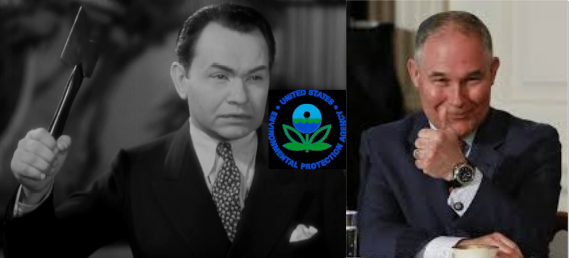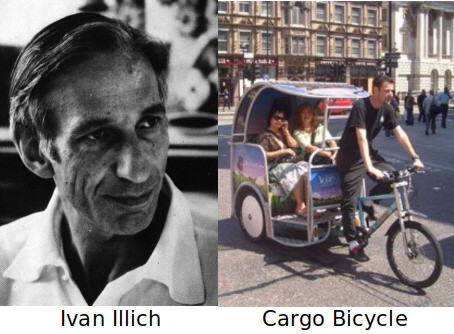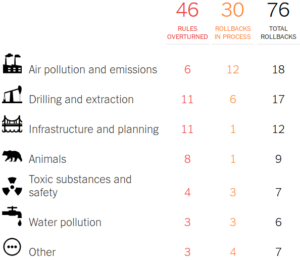
The 5 July 2018 blameworthy yet unrepentant fall from grace by EPA head, Scott Pruitt, had the typical staging and theatrics of any of the president’s* firings or resignations. Taking a page from his boss’ playbook, Pruitt had seemed not to care about appearances of corruption, having grabbed the gold in cavalier ways – an oil lobbyist’s condo for $50 a night, $43,000 for a soundproof phone booth in his office, $ hundreds of thousands for first class and chartered flights, a $3 million 20-member security detail, using EPA resources trying to get his wife a Chick-fil-A franchise, and more. When he resigned amid so many scandals, ethics violations, extravagant spending schemes, and lawsuits, he played the martyr when saying “The unrelenting attacks on me are unprecedented and have taken a sizable toll” – and the saint by telling the president* “My desire in service to you has always been to bless you . . . I believe you are serving as President today because of God’s providence. I believe that same providence brought me into your service”. Such trauma-drama; you just can’t make this stuff up.
Pruitt, who was described by Richard Wolffe (and many others) as “The Worst EPA Administrator of All Time”, is gone – Goodbye to the worst EPA administrator of all time. But it can’t be overlooked that Pruit’s departure is just one spin of the “corporate-official revolving door syndrome”. Whether an elected or appointed official, or a corporate lobbyist or director, they don’t care which role they play, because they are all corporatists working for the good of corporations. And they don’t care if their government tenure is long or short, so long as they do maximum damage to society’s protections. Their purpose, and their only purpose, is to grease their own skids while eliminating any semblance of corporate regulation or restrictions. Pruitt is gone, but his damage is considerable. Said Ken Cook of the Environmental Working Group “Sadly, the ideological fervor with which Pruitt pursued the destruction of environmental regulations and the agency itself live on”. Let me count just some of the ways.
- Dismantling the EPA, slashing staff and advisory panels, spying on employees
- Rolling back 25 EPA rules that protected the air, water, and climate
- Evaluating regulations based on cost in dollars rather than cost to the environment
- Minimizing restrictions required by the Clean Power Plan
- Reversing the ban for all food crop uses of chlorpyrifos
- Gutting the Waters of the United States rule so downstream impacts are exempt
More details can be found at – Scott Pruitt is out but his impact on the environment will be felt for years, EPA rollbacks already touching Americans’ lives, and 76 Environmental Rules on the Way Out Under Trump. With Pruitt gone, one would hope for reinstatement of some of these rules, or at least a breather from the onslaught. Unfortunately, there are always more shock troops waiting in the wings.
Andrew Wheeler, Pruitt’s replacement, was a lobbyist for Murray Energy, the largest coal company in the U.S., he served as a vice president of the Washington Coal Club industry association, and he lobbied the Department of the Interior to open Bears Ears National Monument to uranium mining. He also had been Chief of Staff for Senator James Inhofe (R-OK), described by some as the loudest and dumbest climate denier in the Senate. Environmentalists are duly concerned that Wheeler will follow the same ideology as Pruitt, but be much more effective. He is a Washington insider, quite familiar with navigating the network of the Federal government. An NPR commentator, Scott Segal, said “He is somebody who has been preparing for a position of responsibility like this really for all of his life”. Bob Deans of the Natural Resources Defense Council said of Wheeler “Going from a train wreck to a house on fire doesn’t give us comfort”. Read more at – Who Is Andrew Wheeler? Key Details On Trump’s Pick To Replace Scott Pruitt, and Andrew Wheeler: ‘point man for Trump’ focused on undoing Obama’s EPA agenda. Be careful what you wish for.

On Thursday, 28 June 2018, at 6:00pm, the Kansas Corporation Commission (KCC) scheduled a hearing in Wichita on a combined rate increase request by Westar Energy. The hearing location is Lowe Auditorium, Wichita State University, 5015 East 29th St. N, Wichita KS 67220. The case includes a penalty rate to be charged only on customers with rooftop solar installed after 28 October 2015. Anyone interested in widespread grassroots solar (distributed generation or DG) as opposed to centrally controlled Big Utility solar, is advised to attend. Here is the KCC docket number and link – docket 18-WSEE-328-RTS, but we apologize that the KCC’s web pages are chronically broken, denying the public timely information. However, the KCC Public Comment page does work, so you may submit your comments here – Public Comment_Westar Rate Hike_18-WSEE-328-RTS.

One of their members of the Flint Hills Renewable Energy and Efficiency Co-op (FHREEC) has written a white paper about the implications of the rate case, entitled “Westar’s Rate Request: Why it is Bad for Ratepayers, Kansans, and Westar Themselves”. Here are excerpts:
“Modern grid-tied rooftop solar is a cheap, simple, safe, and an efficient way to generate power. With a do-it-yourself installation (like FHREEC does), a home-owner can double their investment in about 7 years. Systems are modular, expandable, and can be installed safely, with a connection to the Westar power grid for back-up supply or excess power sales. Electricity will flow back into the grid whenever the building’s collectors are generating more electricity than is being used by the occupants. This is called ‘distributed generation’ (or DG), and Westar Energy could choose to incorporate it into their plans for meeting consumer demand, as so many utility companies around the world are doing. Instead they are fighting it.
“Westar proposes to impose a different billing system on customers who generate some of their own electricity, called the ‘demand plan’, a relic of old metering technology invented prior to ‘time-of-use’ meters. Westar has not been transparent about the details of this plan. From what we can tell, customers who generate any of their own electricity would be charged a fixed base fee, plus a volumetric fee, plus a demand fee. The demand fee would be calculated based on the highest 15-min draw placed on the system in a given month (not the average, not the median, but the highest). The solar customer could be charged as much as $70-90 extra on their bill that month.

“Evidence indicates that this rate case is a punitive measure intentionally designed to kill the financial benefits of rooftop solar. Westar views any generation not on their side of the meter as a threat. Westar places solar in the category of ‘risks that adversely affect their bottom line’, admitting that significant advancement in technology and decreased hardware costs make solar generation competitive. They also state that viable battery backups for solar systems are coming on the market, and when advancements in batteries catch up to advancements in panels, it will be easy to leave the grid entirely.
“Current Westar policies intentionally keep consumers in the dark, but they could be more transparent regarding rate structure for DG customers. On www.westarenergy.com, there are examples of how customers are billed under standard rate plans, but no adequate explanation of how DG solar residential rates are currently calculated, nor how the proposed new DG residential rates would be calculated. Generating renewable electricity may be protected by federal laws in the Public Utility Regulatory Policies Act (PURPA). We question whether Westar has any legal basis for punitive action aimed at customers who install a few panels to lower purchased consumption.

“Since DG customers buy less electricity, they are accused of not ‘paying their fair share’, of using the grid as a ‘battery’, or in the wording of the docket, as an energy ‘backup’. Almost by definition, the grid is a backup – for keeping warm or cool or well-lit when we can’t put on an extra sweater, cool off in the shade, or read by the light of the sun. We only purchase energy when we must, but Westar’s wording seems to imply that fixed, high energy consumption is something they have a right to expect of the consumer. By the same logic, would they penalize someone who chooses to conserve energy by drying their clothes on a clothesline instead of using a clothes dryer, and force them into a different rate class? Modernizing the grid is a viable solution to incorporating DG, as has been done elsewhere (see: http://www.raponline.org/document/download/id/7956publication “Teaching the Duck to Fly”).
“Technology exists that would help energy-conscious consumers and Westar work together to combat peak demand problems. Peak demand periods are when utility companies struggle to meet demand, and rooftop solar helps the grid, rather than harms it, by producing peak load power. Because peak load power is worth more than base load power, DG customers should be compensated rather than penalized. The proposed rate structure is counterproductive to Westar’s goal of mitigating peak demand issues. In the near future, many consumers will simply opt to be off-grid entirely unless they are provided with economic incentives to remain faithful to it. Stifling advancements in technology never works in the long term. Corporations that cling to antiquated policies and procedures fail. It is time to work together toward solutions that are forward-looking, fair to consumers who care about controlling their energy costs, and promote the long-term financial viability of Westar Energy.” You may submit your comments to the KCC here – Public Comment_Westar Rate Hike_18-WSEE-328-RTS.

Considered one of the most important social philosophers of the 20th Century, Ivan Illich proposed in his 1974 book, Tools For Conviviality, a retooling of society itself. Tools for Illich were not just mechanical devices, but also institutions, industrial productivity, transportation systems, and information sharing. He defined convivial tools as those most accessible by each person, the least controlled by others, and without restricting equal use by others. His 1973 book, Energy And Equity, posited that “Participatory democracy postulates low-energy technology. Only participatory democracy creates the conditions for rational technology.” Illich advocated for a scaling back of our energy intensive consumer society long before most recognized how such a society results in ecological collapse and climate disruption. He proposed simpler autonomous tools for the sake of equity, justice, and the health of our souls. In this context, the focus is bicycles.

The bicycle as the most convivial of tools
The motor car fails as a convivial tool, as it is dependent on centralized production far beyond the capability of individuals or a cottage industry, and its use severely restricts those without an automobile of freely using any form of non-motorized mobility. Anywhere that they were introduced to non-industrialized communities, automobiles expropriated convivial public spaces by virtue of their size and speed, the lanes, roads, village squares, and market places that previously had been the equally shared commons. In the words of Ivan Illich, “The present world is divided into those who do not have enough and those who have more than enough, those who are pushed off the road by cars and those who drive them” – Tools for Conviviality: Illich.

In describing the superior efficiency of human powered mobility Illich wrote “Man on his feet is thermodynamically more efficient than any motorized vehicle and most animals. Man on a bicycle can go three or four times faster than the pedestrian, but uses five times less energy in the process. He carries one gram of his weight over a kilometer of flat road at an expense of only 0.15 calories. The bicycle is the perfect transducer to match man’s metabolic energy to the impedance of locomotion. Equipped with this tool, man outstrips the efficiency of not only all machines but all other animals as well”. He goes on to say “The invention of the ball-bearing made possible the bicycle, allowing the wheel to become useful for self-powered mobility. When combined with the tangent-spoked wheel and the pneumatic tire, the ball-bearing signaled a revolution, a true crisis, a true political choice . . between more freedom in equity, or more speed . . two new types of locomotion, respectively symbolized by the bicycle and the car” – Self-Powered Mobility: Energy and Equity; from Energy and Equity: Illich.
The envelope please: equity or speed?
It’s apparent everywhere that humans have a preference for speed, usually without realizing the implication for curtailing equity. Speed gives a unique pleasure, and a thrill like no other. But society’s choice of speed also received no small boost from sales marketing by the merchants of steel and petroleum. Simultaneously, public officials wishing to curry favor from the auto-oil crowd chose to spend the lion’s share budgeted for motorways, which severely constrained funding for bikeways. This scenario played out virtually everywhere, subsidized by Federal highway money, the epitome being the Interstate Highway System begun in the 1950’s.
When Davis CA and a few other cities like Boulder, Eugene, Madison, and Palo Alto tried to shift the emphasis toward separated bikeways in the 1960’s, a small, highly vocal, yet misguided group of bicyclists actually fought it, and delayed protected bikeways for decades. With the motto “Same Roads. Same Rules. Same Rights”, the so-called “vehicular cyclists” argued for access to the same pavement, rather than equal access to safety by cyclists of all ages and skill levels. Being only 6% of potential bicyclists, the message of vehicular cyclists would not have been so influential, except that it played into the hands of traffic engineers who made it their excuse to spend nothing on bikeways – One Surprising Reason the U.S. Lags Behind the World on Bikeways.

This issue of equity is not about access to a bicycle, which nearly anyone can have. The issue is access to a roadway safe from speeding motor vehicles. Today, it’s become clear that equity between bicycles and motor vehicles means parity of speed – that of bicycle velocity, or 15 mph. This makes it safe for everyone, whether they are people who walk, people who pedal, or people who drive. At 15 mph, everyone is visible, everyone is aware, and everyone can safely share the same space convivially. This was Ivan Illich’s prescription for convivial transportation, and it is the core design principle of Dutch “woonerfs”, which translates as “living street”. In the U.S., the concept is called “neighborhood greenways”, or “bike-walk streets”, or “bicycle boulevards” – Bicycle Boulevard images.

A recent report by the University of California Merced and published in Agronomy projects that climate disruption will have huge impacts on our food supply of California almonds, pistachios, oranges, apricots, nectarines and prunes, more than a third of our vegetables, including artichokes, broccoli, spinach and carrots and other food crops. Climate related impacts include the following: fluctuation and extremes of rainfall and floods, less Sierra snowpack resulting in less irrigation, Summer heat waves, greater susceptibility to disease, fewer Winter chilling days required to break seed dormancy, and fewer bees to pollinate crops.
Shorter chill seasons will make vast areas no longer suitable for chestnuts, pecans, apricots, kiwis, apples, cherries and pears. Severe heat waves will reduce yields of wine grapes, strawberries and walnuts. With lower bee populations, pollination will be compromised for almonds, apples, avocados, cashews, chestnuts, citrus, pears, and many vegetables and small fruits including grapes and strawberries. The report states that “By the end of this century, the shrinking winter chill period will reduce the acreage of the Central Valley suitable for chestnut, pecan and quince by 22%, and for apricot, peach, nectarine and walnut by more than half. By 2000, only 4% of the Central Valley was suitable for apples, cherries and pears, but none of that will be left by 2060 under almost any climate change scenario” – You can kiss much of California’s agriculture goodbye because of climate change..

A related report by the United Nations Commission on Trade and Development (UNCTAD) titled “Wake Up Before It’s Too Late” gave warning five years ago about the importance of working simultaneously on climate disruption, food security, and agriculture. The report primarily addresses how to feed the world through organic agriculture. But in so doing, by definition, fossil fuels are eliminated from production and use in fertilizers, pesticides and herbicides. As states the report, “This implies a rapid and significant shift from conventional, monoculture-based and high-external-input-dependent industrial production toward a mosaics of sustainable, regenerative production systems that also considerably improve the productivity of small-scale farmers”. With drastically decreased or eliminated fossil fuel use, there will be multiple benefits for the climate, the land, and the people: increased soil carbon content, lower greenhouse gas emissions, more extensive agroforestry and uptake of CO2, greater use of organic fertilizer in a closed nutrient cycle, cleaner streams and groundwater, and healthier and more self-reliant communities. The take home message is that “Organic and small-scale farming is the answer for feeding the world”. Learn more at – Urgent agricultural message from United Nations: Wake up before it’s too late.

The Thin Green Line – an enigmatic, yet intuitively charged, descriptor of the ecological organizations in the Pacific Northwest that are engaged in near heroic struggles against fossil fuels. The involved activists consist of environmental groups, Native tribes, think tanks, community empowerment groups, public interest law firms, and others. They aren’t necessarily working as a unit, though their causes overlap, and they often collaborate on large issues. But collectively they are The Thin Green Line, and have a cumulative impact blocking tar sands oil, fracked shale oil, natural gas, and coal from reaching export terminals on the Pacific coast. Two of the key players are the Sightline Institute that ties issues and groups together with research and news, and the Columbia Riverkeeper that acts on many levels of river protection, legislative efforts, and regulatory challenges. The Sightline Institute maintains the website of The Thin Green Line.

As their website says “The Pacific Northwest stands squarely between the most voracious energy markets in the world and huge fossil fuel deposits in the interior of North America — Powder River Basin coal, Bakken shale oil, Alberta tar sands, and remote natural gas fields”. The region itself doesn’t have much in the way of energy deposits for export, but it can act as gatekeeper. The ports of the states of Oregon and Washington and the province of British Columbia are absolutely essential for Big Energy to sell their carbon-intense fuels to Asian markets. Climate and ecological activists recognize these ports to be strategic choke points. By controlling the ports, they can seriously bottle up the energy. It’s a Thin Green Line they have drawn in the sand.
Success comes from persistence more than anything. Community organizers have a saying “Developers always come back”. It’s like a game of whack-a-mole. Corporations are all about profit, and their money must not be idle, but invested in active pursuits. So if they are thwarted at one turn, they always seek another approach – a different pipeline route, a more compliant town, a stronger legal argument. They must be beat back repeatedly. Some of these battles have taken 12 years or more of filings and hearings and court appearances. Victory under such circumstances takes persistence that comes only from passion, such as love of a river, or the beauty of community.

A couple recent successes of the Thin Green Line have been Fracked Gas-to-Methanol Refinery Permit Ruled Invalid, and Portland’s Landmark Fossil Fuel Policy Ruled Constitutional. Big or small, each victory adds up. One of the more notable victories was the Failure for Giant Tesoro Oil Train Terminal. Tesoro Oil had proposed to build North America’s biggest oil train depot within blast radius of downtown Vancouver WA on the Columbia River. The Tesoro Savage terminal was the last remaining undecided project of at least a dozen export proposals. Prior to this, other proposals were defeated by community opposition – Clatskanie, Longview, Grays Harbor, Tacoma, Anacortes, and Whatcom County. Tesoro’s case was fought for years, recently through a series of hearings before the Washington Energy Facility Site Evaluation Council (EFSEC). On 28 November 2017, EFSEC unanimously recommended denial of the Tesoro Savage oil terminal. Governor Jay Inslee had then to make the final decision, and he denied the permit on 29 January 2018 – Failure for Giant Tesoro Oil Train Terminal. One might say that The Thin Green Line tied the knot on this one. But they always come back. Here’s one that you may want to help out with – Fight Fracked Gas! Protect the Columbia!.

















Recent Comments